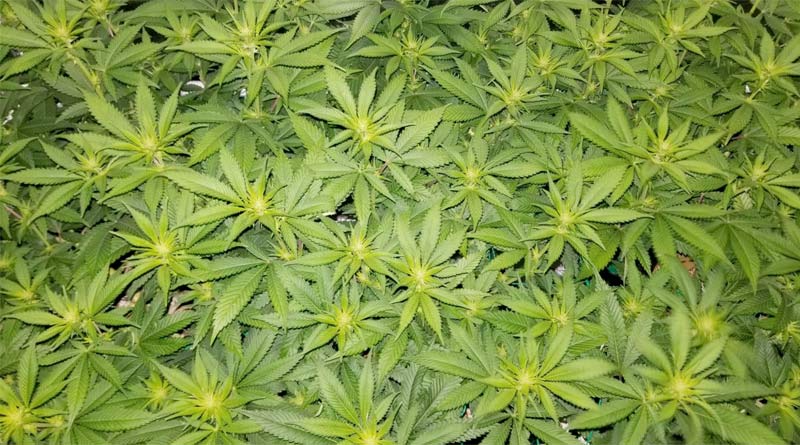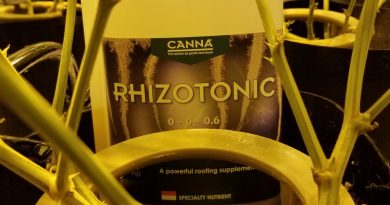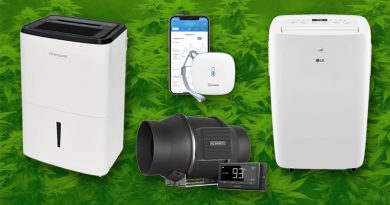Best weed nutrients for new growers: How to select the best nutrients for growing cannabis
How do you find the best nutrients for weed as a new grower? There are so many different nutrients for growing cannabis available that it can be very confusing for beginning pot growers. In this article you’ll learn to understand how to choose the best nutrients for growing marijuana.
The aisles of bottles of weed nutrients at local grow shops can be overwhelming. You’ll see tons of bottles of all sizes and colors, some costing hundreds of dollars. All claim to be the best. Online searches make it even harder by adding even more options. Growers forums give all kinds of advice, some good and some not-so-much. So where do you begin?
Choosing the best nutrients for weed based on your growing medium
There’s a lot of things to consider when planning your cannabis grow. The first decision you’ll need to make is what kind of medium you’re growing your pot plants in. Outdoors? Indoors? Organic soil and amendments? Soiless mediums such as coco coir? Hydroponics? You’ll need to pick a grow medium first. Need help? Check out How to select the best medium for growing weed.
Once you’ve determined the way you want to grow, you can narrow down your nutrient options so you can figure out the best nutrients for growing weed with that method.
Nutrient basics: Nitrogen, Phosphorous, and Potassium (NPK)
To start you’ll need a balanced fertilizer specifically made for weed. Most nutrient companies produce 2 or 3 part fertilizer lines of base nutrients that contain Nitrogen (N), Phosphorus (P), and Potassium (K).
Note: Avoid Miracle-Gro and similar generic fertilizers (including Mircle-Gro bagged potting soil), you’ll have better luck if your nutrients were designed specifically for growing pot plants.
What is NPK?
Like all fertilizers, the bottles will provide the percentage ratio of NPK. It will appear number format such as 10-5-5, which would be 10% Nitrogen (N), 5% Phosphorus (P), and 5% Potassium (K).
Nutrient lines that use two or three bottles will have different NPK ratios for each part. You’ll adjust the amount of each used depending on where the plant is in the grow cycle.
How much NPK should be used for weed plants?

Typically marijuana plants need a higher ratio of nitrogen in the vegetation stage to encourage growth, and in the flowering stage they need stronger phosphorus levels which aids in bud development. This is why some manufacturers of weed nutrients offer a “vegetative” and “flowering” version of their nutes.
Often NPK fertilizers used for growing marijuana will come in two separate bottles that should be used in equal amounts, such as Canna Coco A/B. This is because the weed fertilizers can’t be combined together in one bottle without negatively impacting the consistency of the liquid nutrients. Nutrient lines with multiple bottles should never be combined together directly — instead they should be added to the water container separately and mixed thoroughly.
Which fertilizer is the best for weed?
There are many growers and therefore many preferences as to the best nutrients for growing weed indoors. Some nutes are much more expensive then others, often a factor in the selection process for new growers. As long as you get a balanced NPK fertilizer with a proven track record of growing weed you should be in good shape. Don’t go for the cheapest one you can find online. You’ll have enough to worry about when you do your first few grows without wondering if the cheap nutrients are the cause of problems you run into.

Organic nutrients for growing weed
Organic growers in soil will often add a series of soil amendments to their mix to slowly release NPK.
Organic nutrients for weed are derived from living things, as opposed to chemical-based fertilizers. Organic nutes can come in liquid or solid form. You can also use bottled organic nutrients to supplement organic soil additives. This is especially needed if you plant in small containers or vegetate plants for a long time since they’ll start to use up what is in pre-mixed bags of soil within a few weeks.
Since weed plants’ roots pull in nutrients when absorbing water from soil, these organic nutrient amendments provide nutrition for plants. They can also lower the soil PH to a range best for allowing nutrient absorption in soil. Examples of commonly used amendments are organic tea, guano (bat turd), organic compost, etc. Organic nutrients for weed can be used in conjunction with each other to get the best results.
The NPK delivered by organic nutes is no different to a marijuana plant than the NPK in non-organic salt-based nutrient solutions. But since organic amendments often take a little time to break down and release the nutrients, the effects are not quite as immediate. This can make it a little harder for newer growers to gauge how much to use and how much from previous applications has already been released.
Liquid salt-based nutrients for growing weed
Many growers choose to use liquid salt-based nutrients for weed. This is especially true if you’re looking to grow hydroponically or in soilless mediums. Growing with hydroponics allows weed roots to absorb their nutrients directly from the watering solution (as opposed to soil grows where the water allows nutrients to get pulled directly from the soil itself).
Using chemical nutrients will give a grower precise control, and allows you to adjust for any nutrient problems quickly. But since the nutrients are made available immediately to your pot plants, it can be unforgiving with problems such as pH imbalance or too high PPMs.
Adjusting nutrient solution pH and monitoring PPMs or EC
What is the best nutrient pH?
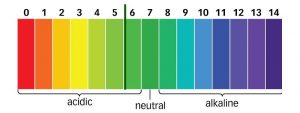
When preparing a liquid nutrient solution, you’ll need to make sure you properly adjust the acidity of the water and the amount of total dissolved solids (TDS) of the nutrients you add.
The acidity or alkalinity of your nutrient water is measured on the pH scale. pH stands for potential of Hydrogen. The pH scale ranges from 1 – 14, with one being the most acidic and 7 being neutral.
You can use pH Down to lower the nutrient solution pH to the recommended range of 5.5 – 6.5 for coco grows (with 5.8 – 6.0 being ideal) and 6.0 – 7.0 for soil applications. Learn more about the best pH to use with coco coir.
Using proper pH allows the plant to absorb the nutrients effectively. The biggest culprit of nutrient uptake problems in weed plants is incorrect pH levels. This is why getting a good pH meter is essential for growing weed if you’re using liquid nutrients.
The Bluelab PH pen is pretty standard among weed growers. It’s accurate and fully submersible. Find the lowest price of Bluelab PH pen on Amazon.
Total dissolved solids (TDS)

The amount of TDS is measure in PPMs (parts-per-million) or EC (a measure of electrical conductivity). Be aware that there are two PPM scales, 500 and 700. Most PPM meters will allow you to toggle through each of these scales, just make sure that you follow the scale associated with the nutrient feeding schedule you select.
Typically you increase the amount of TDS in your nutrient solution as the plant flowers, scaling back at the end before flushing with plain water right before harvest.
Too much nutrients in your water and your PPMs will be too high, resulting in nutrient burn seen by a yellowing of weed leaf tips and edges. Too low PPMs and you’ll start to have nutrient deficiencies such as yellowing. Note that nutrient deficiencies can also be caused by incorrect pH, so always pay attention to both.
Bluelab’s Conductivity Pen is a good choice to measure PPMs for new growers. They also make a larger Commercial Truncheon Nutrient Meter which is longer and can be used to stir your bucket of water after you add liquid nutrients. If you need to buy both a conductivity meter and a pH meter you can save a few bucks getting the Bluelab pH pen and Conductivity pen multipack on Amazon.
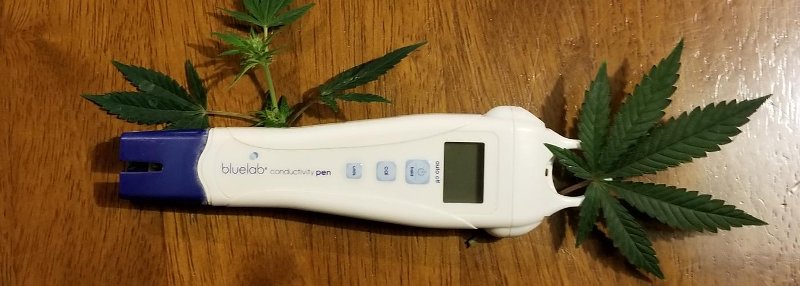
Additional nutrients and additives for weed nute solutions
While most most NPK fertilizers for growing weed will have the basic nutrients needed, there are additional chemicals used alongside them. While not all are needed, when used properly these additives can really boost your plants’ growth and yield. We don’t have time to get into all of them here, but there are several categories you should be aware of.
Some additives are made to boost cannabis flowering. For example the Canna nutrient lines use Phosphorus and Potassium booster called Canna PK 13/14 for just one week during mid-flowering to make for P and K available to the plants.
To correct Calcium (Ca), Magnesium (Mg), or Iron (Fe) deficiencies you can use supplements such as Cal-Mag Plus. If you’re growing in coco coir this is definitely something you’ll need to use to avoid deficiencies.
Additional chemicals commonly used when growing weed encourage rooting (an example is Canna Rhizotonic). Others provide enzymes for proper health within the growing medium (such as Canna Cannazyme), or enhance blooming (Canna Boost, molasses, etc.).
The shelves at your local hydro shops are full of options, each one likely proclaiming they are the best nutrients for growing marijuana. If in doubt about the best nutrients for weed in your grow situation, ask for help to make sure you’re covering your bases. Using a packaged product line is a good idea for beginners, once you get a few grow runs under your belt you can start to experiment a bit more.
Best cannabis nutrient brands to consider for new growers
The best coco coir nutrients for growing weed are designed for growing weed in coco fiber. Realistically you use any hydroponic nutrient line in coco, but some work better than others. It’s not a bad idea to try a few to see what gets you the best results for the lowest price, as nutrients can get expensive. Most coco coir nutrients for growing marijuana are salt-based coco fertilizer which allows the inputs to be immediately available, and there are some organic or veganic options for cannabis available as well.
Canna Coco

When running Canna Coco you’ll also likely need a calcium and magnesium supplement such as Botanicare Calmag Plus or CaliMagic, Fox Farm Gringo Rasta Cal-mag or Bloom City Cal-mag.. You can get the best prices on Canna nutrients by ordering from Amazon, and some of the local hydro shops near me will match whatever the current lowest Amazon price is which is cool.
General Hydroponics

Don’t forget your CalMag supplement, Calmag Plus or the General Hydro CaliMagic combo, or else you will likely see Calcium deficiencies.
Fox Farms Coco Nutrient Trio

The Fox Farms nutrient trio consists of their three-part hydro nutes: Grow Big, Tiger Bloom, and Big Bloom. Grow Big is used in the vegetative growth stage, replaced by Tiger Bloom once you see the first signs of bud development, generally a week or two after flipping lights to 12-12. Big Bloom is used throughout both growing cycles.
Fox Farms makes a number of other products to enhance their basic trio (such as the dirty dozen starter pack), but if you’re just starting out you can begin with the Fox Farms coco trio and still see great results.
House and Garden Nutrients
The House and Garden nutrient line consists of Coco A + B, Roots Excelurator, Bud XL, Algen Extract, and shooting powder. It’s not cheap. But it’s made just for coco grows so you’ll get good results.
Whether your results are worth the added cost isn’t something we can answer since we’ve never run this line. But if cost isn’t an option this line will get you some nice buds for sure. As always, invest in a cal-mag supplement as well.
Vegamatrix
The Vegamatrix nutrient line consists of veganic nutrients that can be used with coco coir. Veganic weed growing takes organic growing to the next level, using only non animal-sourced organic ingredients. Vegamatrix was started by Kyle Kushman, a former High Times editor, breeder, and grower.
The Vegamatrix nutrient line consists of Grow, Bloom, Boost, Prime Zyme, Hard-n-Quick, FTB, Amp-it, and Big-n-sticky. Multiple Cannabis Cup winners have used the Vegamatrix line. There’s a lot more bottles to consider with this line, but it’s the only veganic nutrient for coco coir that we’re aware of so if you feel you need to ditch the chemical nutes to get what they claim produces the best tasting weed then go for it.
DynaGro Nutrients
DynaGro nutrients consists of Foliage Pro and Bloom. I’ve never used it, I tend to lean towards one of the more coco-specific options. But a few growers we’ve spoken to have run DynaGro with suffiecient results.
Make sure to mind your calcium and magnesium, as with any coco nutrient you’ll likely run into issues if you don’t use a cal-mag supplement.
Botanicare Coco Nutrients
Botanicare Pure Blend Pro Grow and Pure Blend Pro Bloom are used for veg and flowering, respectively. Many growers are familiar with other Botanicare products such as Cal-Mag Plus and Silica, both of which we’ve had success with over the years.
The Botanicare Pro Grow and Pro Bloom line is made for hydroponic systems, soil, and coco according to the label. It can be bought in a combo pack as well. Having never used it, we can’t say if its one of the best nutrients for growing weed in coco coir.


